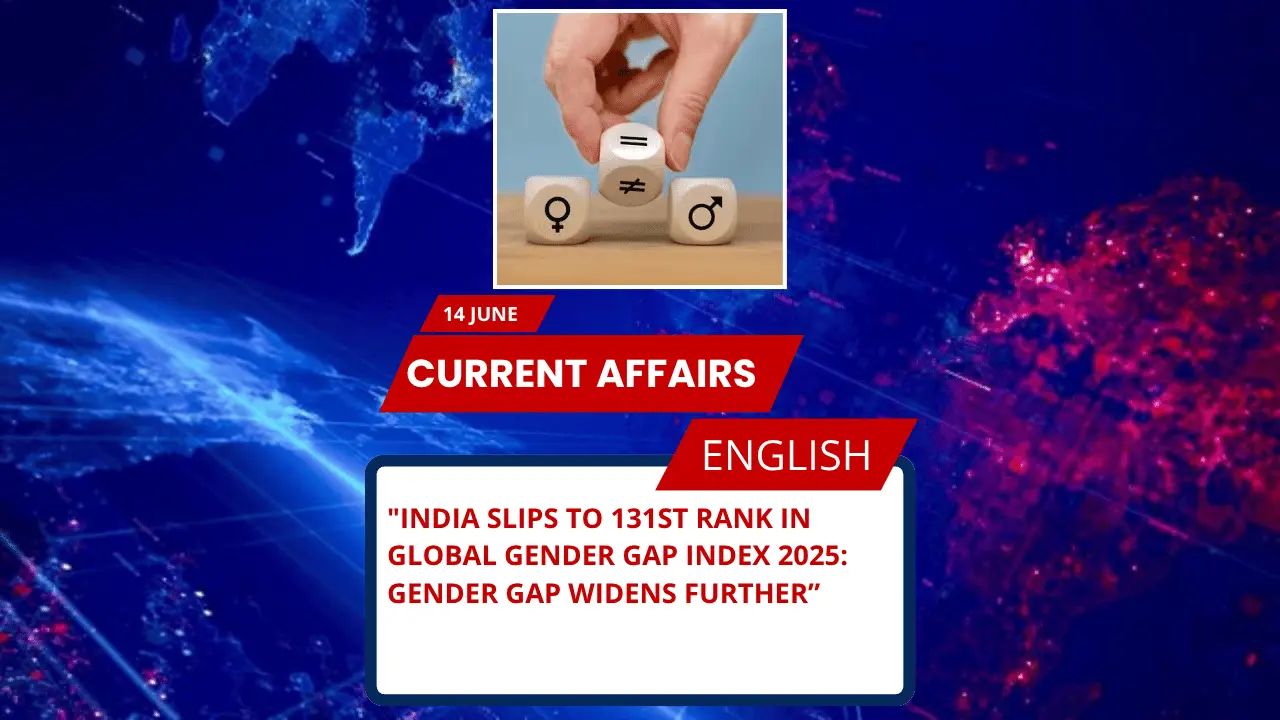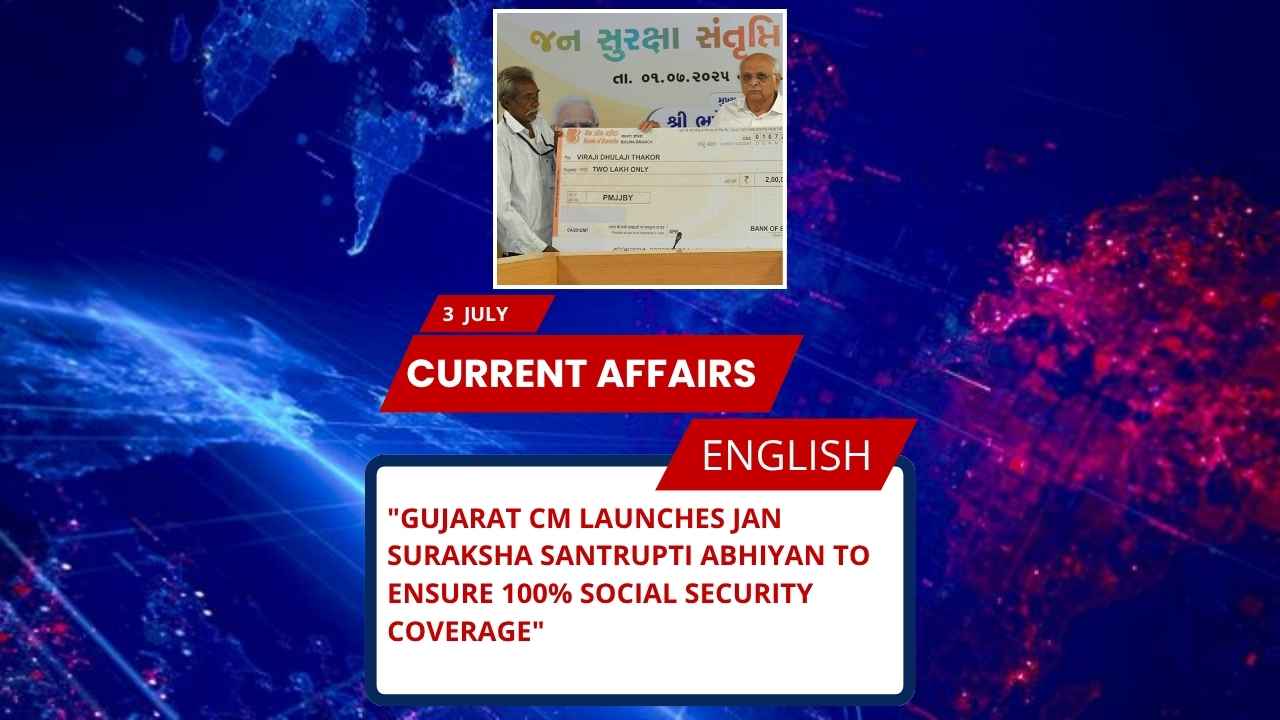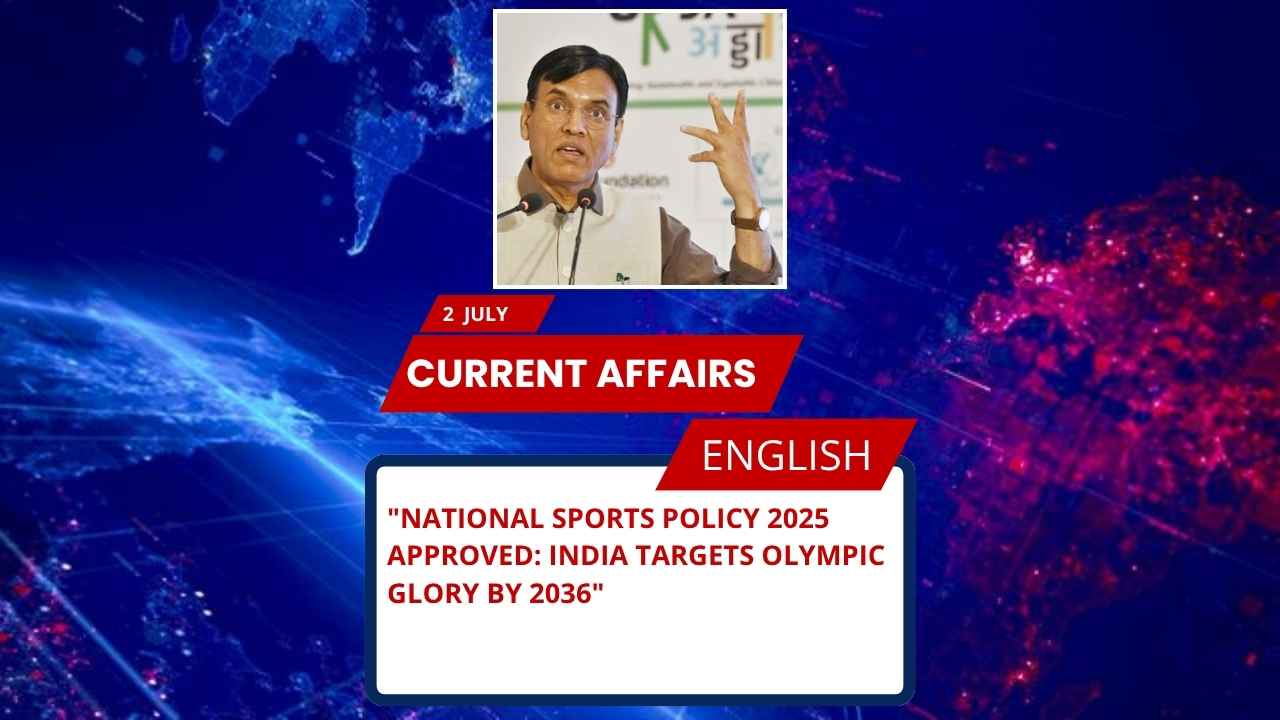
Key Points for SSC, UPSC & Other Govt Exams
- India’s Rank (2025): 131 out of 148 countries (129th in 2024)
- Gender Parity Score: 64.1% — among the lowest in South Asia
- Top Performer (Global): Iceland (Rank 1, 16th year in a row)
- Top Performer (South Asia): Bangladesh (24th rank globally)
- India’s Economic Participation Parity: Improved to 40.7%
- India’s Education Attainment Parity: 97.1%
- India’s Health & Survival Parity: Improvement in sex ratio at birth
- India’s Political Empowerment Parity: Decline in women’s representation in Parliament (13.8%) and ministerial positions (5.6%)
Detailed Explanation
India’s Performance in Global Gender Gap Index 2025
The World Economic Forum (WEF) released its 2025 Global Gender Gap Report, where India slipped to 131st rank among 148 nations, dropping two spots from 129th in 2024. India’s overall gender parity score stands at 64.1%, placing it among the lowest-ranked countries in South Asia.
Four Dimensions of Gender Gap Index
The Index evaluates countries on gender parity across these four key dimensions:
- Economic Participation and Opportunity
- Educational Attainment
- Health and Survival
- Political Empowerment
Dimension-wise Performance
Economic Participation and Opportunity
India saw a marginal improvement, with parity increasing by 0.9 percentage points to 40.7%. Estimated earned income parity rose from 28.6% to 29.9%. Labour force participation parity stayed at 45.9%, the highest India has recorded.
Educational Attainment
India achieved 97.1% parity in education, with improvements in female literacy and tertiary enrolment.
Health and Survival
Health parity improved due to better sex ratio at birth and healthy life expectancy.
Political Empowerment
India recorded a decline, with women in Parliament falling from 14.7% to 13.8% and women ministers dropping from 6.5% to 5.6%, far from the peak 30% in 2019.
How India Compares Globally
- Iceland remains the global leader for the 16th consecutive year, followed by Finland, Norway, UK, and New Zealand.
- Bangladesh is South Asia’s best performer, jumping to 24th rank globally.
- The global gender gap is 68.8% closed, marking the strongest progress since COVID-19.
Important Facts about World Economic Forum (WEF)
- Founded: 1971
- Headquarters: Cologny, Switzerland
- Founder: Klaus Schwab
- Known for: Annual Davos meetings, Global Competitiveness Report, Global Gender Gap Report
MCQs for Practice
Q1. In the Global Gender Gap Index 2025, what is India’s rank?
A) 129
B) 131
C) 124
D) 135
Answer: B) 131
Q2. Which country topped the Global Gender Gap Index 2025?
A) Finland
B) Norway
C) Iceland
D) New Zealand
Answer: C) Iceland
Q3. What is India’s gender parity score in the 2025 report?
A) 66.2%
B) 64.1%
C) 68.8%
D) 62.5%
Answer: B) 64.1%
Q4. Which South Asian country ranked highest in the 2025 Global Gender Gap Index?
A) Nepal
B) Sri Lanka
C) Bangladesh
D) Bhutan
Answer: C) Bangladesh
UPSC-Style FAQs (With Model Answers in Answer Writing Format)
Q1. Critically analyse India’s performance in the Global Gender Gap Index 2025.
Answer:
India’s performance in the Global Gender Gap Index 2025 reflects both progress and persistent challenges in achieving gender parity. With a rank of 131 out of 148 countries, India slipped two positions compared to 2024. The overall parity score of 64.1% places India among the lowest in South Asia.
On the positive side, India improved slightly in economic participation, with parity in estimated earned income increasing to 29.9%, and labour force participation parity stabilising at its highest level of 45.9%. Educational attainment saw commendable growth, with 97.1% parity, indicating progress in literacy and enrolment rates. Health and survival indicators also showed modest improvement due to a better sex ratio at birth.
However, the most significant decline is in political empowerment. Representation of women in Parliament fell to 13.8%, and women ministers to 5.6%, far below the peak levels seen in 2019. This decline indicates that despite some economic and educational gains, gender parity in political leadership remains elusive.
In conclusion, while India’s incremental progress in certain sectors is noteworthy, systemic reforms are essential to bridge gaps in political participation and economic opportunity to achieve holistic gender parity.
Q2. Discuss the role of World Economic Forum in promoting gender equality globally.
Answer:
The World Economic Forum (WEF) plays a significant role in advocating for gender equality through its data-driven reports and multi-stakeholder initiatives. Since 2006, the WEF has published the Global Gender Gap Report, which benchmarks nations on key gender parity dimensions such as economic participation, education, health, and political empowerment.
By providing an annual ranking, the WEF highlights areas requiring policy focus and inspires accountability among governments. The WEF’s Global Future Councils and Closing the Gender Gap Accelerators work directly with governments and businesses to design strategies for inclusive growth.
In summary, WEF’s consistent monitoring, global benchmarking, and policy recommendations have contributed to a stronger global focus on gender parity, helping drive reforms, corporate practices, and legislative measures towards a more gender-equal world.







